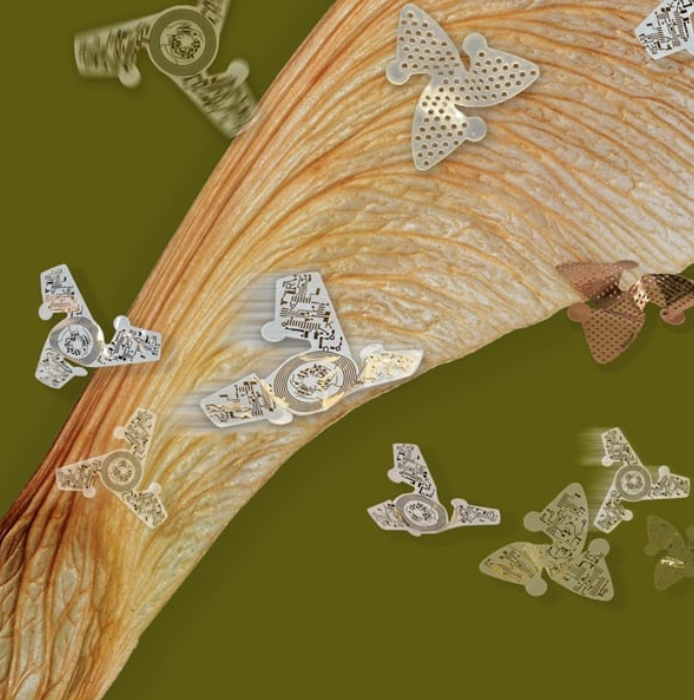“Engineers have created the smallest-ever flying man-made structure: a tiny, moving microchip.”
“…Rogers’ team studied the aerodynamic qualities of several plants’ seeds, drawing inspiration from the tristellateia vine, which has star-shaped seeds, and experimented with various designs in laboratory conditions. The first designs of the tiny craft were made in two-dimensions, bonded onto a slightly stretched rubber substrate.
When the substrate was relaxed, a controlled buckling process caused the wings to ‘pop’ up into a defined three-dimensional form. This meant that the engineers could build semiconductor devices in a conventional manner, which can then be ‘popped up’ like a children’s book.”
__________________________________________
Smith, A. (2021, September 22). Scientists “beat nature” building world’s smallest ever Flying Machine. The Independent. https://www.independent.co.uk/tech/smallest-flying-machine-beat-nature-chip-b1924921.html
__________________________________________
As an extension of the article about maple seeds, this is another article with natural inspirations for flight. Producing a flight example that is less environmentally harmful is one thing, but what if flight education could blend into nature in the way these sensors are made to? Especially with the “pop up” production this is a great example of another way to think about flight. This is on the cutting edge of a type of flight, maybe pulling from cutting edge tech be a window into explaining older models, or the history of the subject itself. It is certainly a compelling and attention catching approach.




